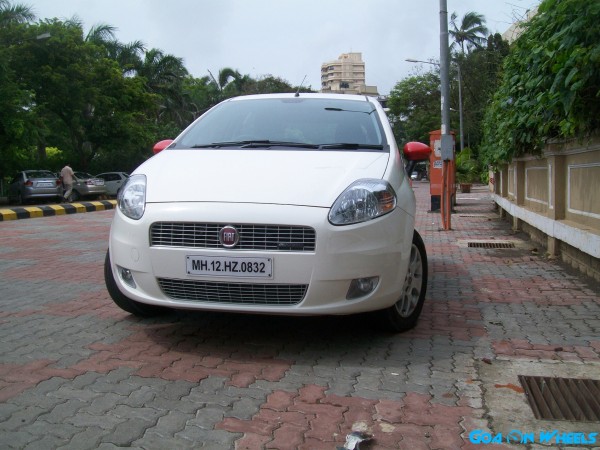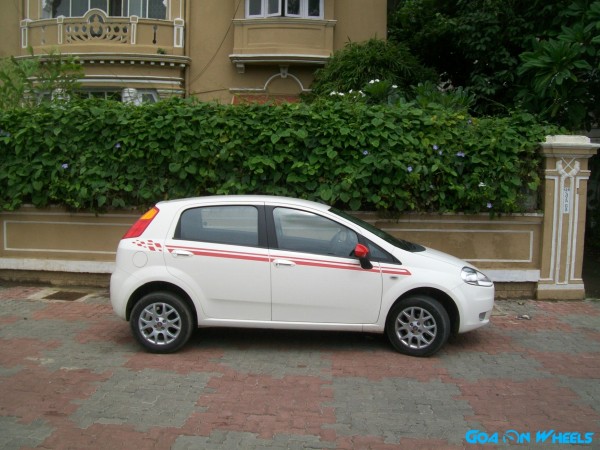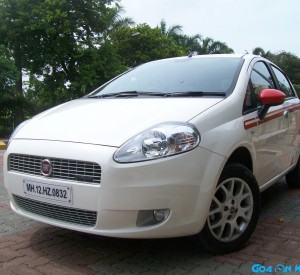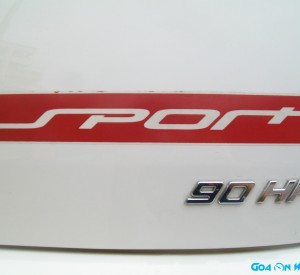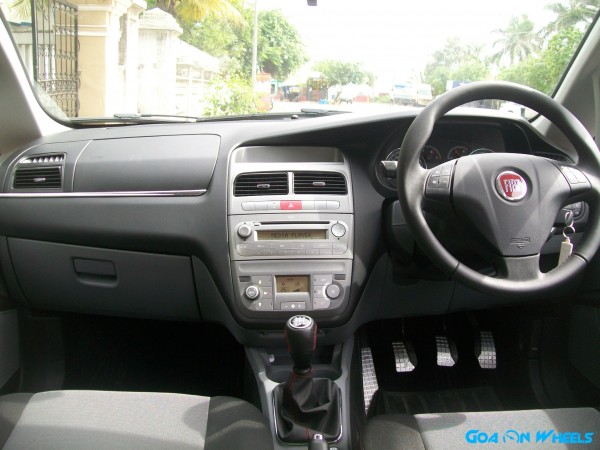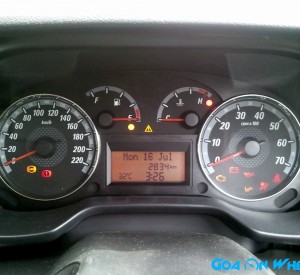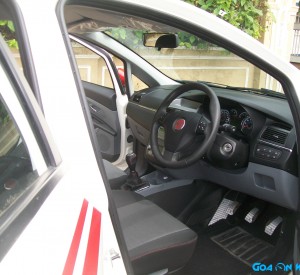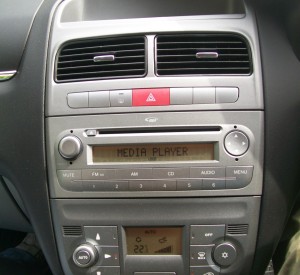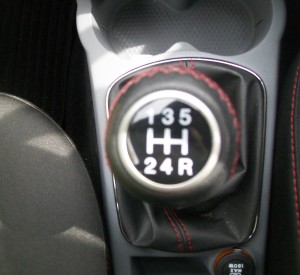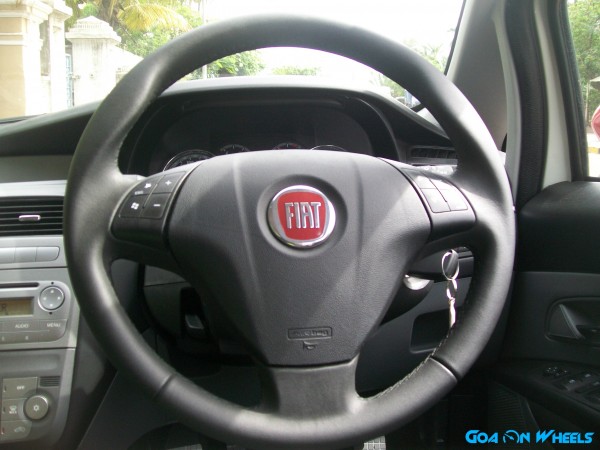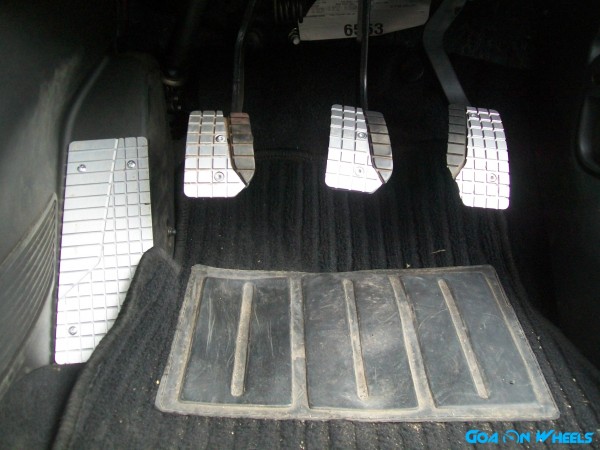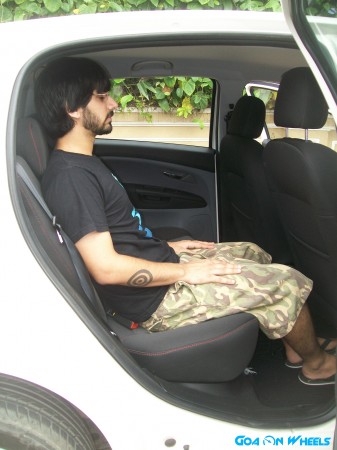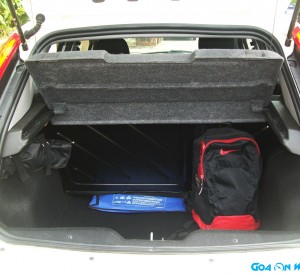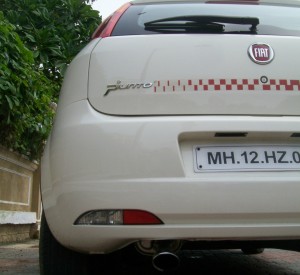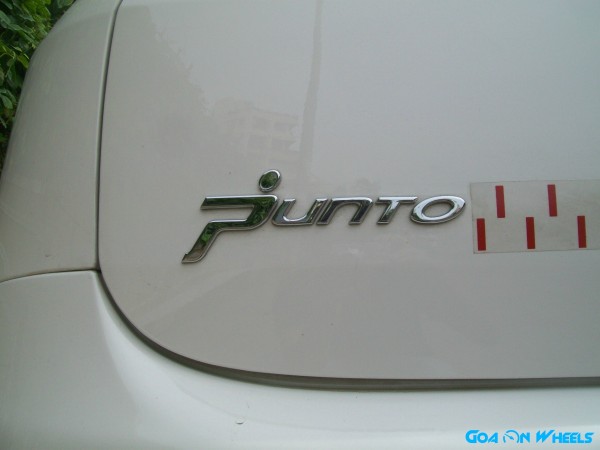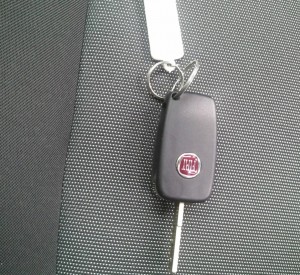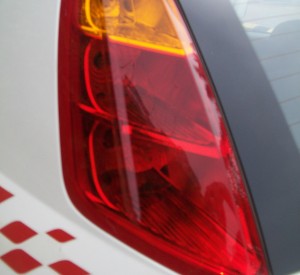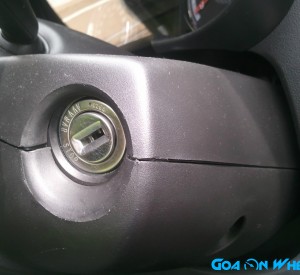(Click on the picture to open a higher-resolution version)
Good Stuff:
- Stunning looks
- ‘Tank-like’ build quality
- Best-in-class ride comfort, handling & driving dynamics
- Outstanding high-speed stability; segment best
- 185mm of ground clearance. Dismisses potholes with aplomb
- Fuel efficient 1.3L diesel engine with adequate power on tap
- High equipment levels(including automatic climate control, Blue&Me, rear air-con and more)
- 5-Star EURO-NCAP safety rating
Bad Stuff:
- Lack of outright performance; significant turbo-lag below 1700 RPM
- Poor fit and finish; inconsistent plastics
- Rubbery gearbox; tends to mis-shift
- Mediocre rear-seat legroom
- Below average after-sales service
Back in 2009, when Fiat had launched the Punto, everyone’s expectations from the company were mixed, yet high. Most loved the car for its modish looks and design and the Punto showed exceptional skills in the ride and handling department. What it lacked was the low-end punch of its competitors, which played a spoilsport in city driving conditions. Things however have changed in the last three years. Fiat has launched a more-powerful spec for the Punto, which the company claims has rectified the problem. I got a chance to drive it in its Sports guise around the streets of Mumbai. Is it Sporty enough? Let’s find out:
Exterior
It’s a well known fact that the Punto is a Linea without a boot (or vice versa). In order to give both the cars their own identity, Fiat has given them different faces. The Punto’s front-end styling undeniably carries inspiration from Maserati. The large bulbous headlamps in particular look great and the chrome-plated grille adds to the distinctive styling.
Coming to the side-profile, the Punto has a fairly tall stance. It becomes more obvious as you move to the rear-end quarter and a part of that is to be blamed to its sloping waist-line. The flared wheel arches add a bit of muscle to the car’s profile and the 12-spoke alloys go well with it. The overall size of the car is very obvious, and the Punto looks more substantial than most of its competitors from the B-segment.
Move over to the back and the raised stance of the hatchback becomes more evident – more so on the 2012-variants with the additional ground-clearance. The vertical tail-lamp assembly reminds many of the Indica, but in no way does it look awkward as on the Tata. The rear-windshield is a little smaller to my liking and as a result the rear-view visibility while reversing is not great. You also get a roof-mounted spoiler on the top-end variants, which is a neat touch.
In all, the Punto has a well proportioned design and looks smashing in flesh. It is definitely one of the best looking cars currently on sale in the market. The car we have here is a limited edition Sports variant that carries a couple of cosmetic tweaks. You get contrasting coloured ORVM’s – they are black on the red car, and red on the white as well as the black car. In addition, the Sports edition carries body decals that run the length of the car and the hatch and a chrome tipped-exhaust sourced from the Linea T-Jet. I personally find the limited edition better looking than the regular car. Fiat hasn’t overdone any of the tweaks and I am glad that the decals look great as compared to the loud and racy ones that Fiat India sells as an optional accessory for the rest of the Punto range.
Interiors
Step inside the Punto and you’ll realise that the car feels roomier than it looks from the outside. If you’re used to say a Swift, then you’ll definitely be in for a surprise. The doors shut with a typical European-car ‘thud’ and there is no doubt that the Punto is better built than most of its competitors.
The interiors of the hatchback are a straight lift from the Linea, albeit in a different finish. To keep things different, Fiat has opted for a dual-tone black and grey interior scheme here. In addition, you get black surround speed-dials over the sedan’s imagination dials. The overall dashboard layout too remains the same as the Linea and there is little to differentiate between the two.
Of special mention is the Punto’s awesome three-spoke, leather wrapped steering wheel that gets mounted audio controls and thumb recess. It is a little bigger than what you’d expect in a car of this size but at the same time it is just fantastic to hold.
The Punto gets a dead pedal, which is a thoughtful addition. Unfortunately, the dead pedal is positioned very close to the clutch pedal which makes the footwell very cramped.
In terms of equipment, the top-end variants get – Dual stage front airbags, electric mirrors, climate control, Blue & Me, 6 speaker MP3 audio system with a USB port, multi-info display, height adjustable driver seat, rear wash & wipe, front and rear fogs, 195/60/15 tyres + 12-spoke alloys and ABS + EBD. Furthermore, the Sports edition we have here comes with ‘Punto’ branded door-sills, sporty metallic pedals and red stitching on the seats and gear knob. A useful inclusion is of the delay function for the power windows, which allows their operation for a short while even after the ignition is turned off.
Moving to the rear, the Punto has adequate space for 2 adults (with an occasional 3rd passenger thrown in). The seats, though not very wide, offer decent under thigh support and are quite comfortable. The legroom too is acceptable for a hatchback and in all, the Punto fares well in terms of space. It may not be an Indica Vista but then it isn’t as bad as the Swift either.
The Punto has a respectable 280 litres of boot space. Besides, the rear-seat can also be folded in a 60:40 manner (for additional cargo). The high loading bay makes loading difficult and the wide tail-gate, easy.
While the overall build quality of the car is impressive, it is the fit and finish of the interior components that is a bit of a let-down. For a vehicle with less the 3000 kilometres on the clock, you don’t really expect plastic bits to be coming off already. Our test vehicle had a lot of mis-aligned panels and there were instances when the glove-box would just refuse to close. Had it not been for these small niggles, the Punto could’ve easily been a hot favourite in this segment.
Performance
This brings us to the Punto’s main area of weakness – the car’s driveability. The Punto 75 HP suffered from serious turbo-lag below 2000 RPM and the hatchback’s excessive weight only made things worse. This spiky power delivery took away a lot from the driving experience of the car, which in turn put off many prospective buyers. Fiat has addressed this issue by equipping the engine with a VGT (Variable Geometry Turbocharger) for an increased power-output. The 1.3 Multijet in the Punto now produces 93 BHP @4000rpm and 209NM of torque @2000rpm. The power-to-weight ratio has gone up by substantially and you now have a car that, at least on paper, moves like it looks.
Crank the engine, first gear and you’re off. Shift to second and you realize that there still is a considerable amount of lag below 1700 RPM. The gearshift quality is rubbery and cannot be compared to the Japs or the Koreans. The clutch, by itself is rather light though. What’s surprising is that despite the power-bump, you don’t really feel any difference in drivability. On paper, a VGT is supposed to overcome the lag in power-delivery but on the Punto, it just doesn’t work. Wait a little, let it spin to 1700 RPM, and then, as the turbo kicks in you get a sudden-surge of torque to play with. The mid-range seems peppier and this is when you realise what’s been missing all this while. The car accelerates a whole lot quicker and you finally start making some progress. If you keep the engine boiling, overtaking will be a piece of cake. The car revs all the way upto 5000 RPM.
What’s disappointing is that, in city driving conditions, the 90 HP doesn’t feel very different from the regular car. It is only when you go flat-out that the additional 15 HP makes a difference. Sure, the turbo kicks in a little earlier when compared to the 75HP but despite that there is still some space for improvement. While testing the Punto on the Sea-Link, I tried catching up with a Polo 1.6. Needless to say, by the time the turbo kicked-in, the Polo was already out of sight.
Overall, in spite of the turbo-lag, the Punto is quite an enjoyable car to drive around. The all-round drivability on the 90HP has improved significantly and the Punto is a delight on the highways. I may not sound very happy with the performance of the car but that is only because my expectations from the update were a little higher. Nevertheless, the Punto lives up to the “Sport” branding and makes as a compelling drive.
Ride and Handling
If the Punto has a USP, this has to be it. The Italian hatch rides and handles extremely well. The car is extremely sharp and responds even to the slightest of steering inputs. Throw it around corners like a go-kart and watch a wide smile appear on your face. It urges you to test its limits and refuses to be unsettled even in the worst of curves.
With the stiff suspension setup, one would believe that the ride quality of the Punto will be hard and choppy. Not True. The Punto absorbs all bumps and potholes with the same ease that it handles around tight corners. Even at a steady 80km/h, the ride is serene, with no bumps, knocks, squeaks or rattles from its body or suspension. You will be stunned by the car’s ability to handle potholes. The Punto behaves like a much bigger car and is one of the most stable cars that we’ve ever driven – which is more than can be said of some premium sedans costing three times as much as the Punto.
Braking
Speaking of the Punto’s braking capabilities, we came across quite a few emergency braking situations during our test-run and the hatchback fared well. The stock tires have decent grip levels and the Punto handles high-speed situations without breaking a sweat. It may not have disc-brakes on all 4-wheels but the overall bite is more than just adequate.
Conclusion
Regardless of its shortcomings, the Punto Sport is no doubt the best diesel hatchback that one can buy today. Fiat isn’t new to the concept of a hot-hatch and the Punto Sport proves that well. It may just be a sticker job on paper but the noteworthy additions to the already potent 90 HP variant make it an appealing overall package. It is fast, good-looking, efficient, spacious, well equipped, well priced… there is a lot going for it. If you’re currently in the market for a diesel hatchback, we would highly recommend you to consider the Punto Sport.
Pointers from our drive
- Fiat claims that the Sports/2012 variants of the Punto have better NVH levels, thanks to additional sound and vibration damping. Our test-car indeed was quieter at idle than the Punto 75, although the same cannot be said for the wind-noise.
- The Punto comes with 195/60/15 tires that are the widest of any hatch.
- Our test-car had a lot of wide-panel gaps, which is just not acceptable for an 8.5 lakh rupee hatchback. Here’s a picture of the infamous-steering column panel gap –
- One of the flimsiest fuel-lids we’ve ever come-across. A replacement should cost you less than a Cadbury Éclairs.
- The MID display tells you which door is open. Neat.
- The “Blue & Me” unit only supports Bluetooth telephony and not A2DP music playback. On the plus side, it can read your text-messages and accept a few voice-commands.
- Speaking of the “Blue & Me,” the Bluetooth unit eats up a lot of space in the glove-box. Although the glove-box is fairly deep, you aren’t left with much space after you throw in your ownership manuals and other such documents.
- The Punto Sport may be a performance hatch but in no way does that hamper its fuel efficiency. We constantly got 15-16 kpl in city driving conditions with the Air-conditioner working throughout.
- Disclaimer: Fiat invited us for the Punto Sport test-drive. They covered all the expenses for this driving event.

